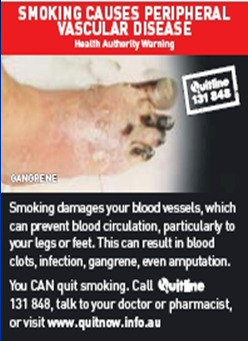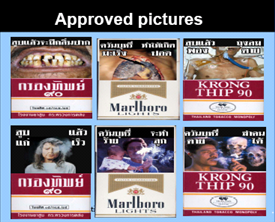Chinese cigarette packaging: Show the truth
The WHO Framework Convention on Tobacco Control (FCTC) took effect in China on January 9, 2006. According to the FCTC, China should print health warnings in a more obvious manner on cigarette packaging to indicate the harms of smoking. However, the reality is still a far cry from satisfying the terms of the convention.
The FCTC was adopted by the World Health Assembly on May 21, 2003, and was put into action on February 27, 2005. It has since become one of the most widely embraced treaties in UN history, with 164 parties in participation at present. According to Article 11 of the convention, "Each party shall further adopt and implement effective packaging and labeling measures within a period of three years after entry into force of the Convention for that Party."
The article sets a series of specific regulations for cigarette packaging and labeling. For example, parties should select contrasting colors for the background of the text in order to enhance noticeability and maximize the legibility of text-based elements of health warnings and messages. Evidence shows that health warnings and messages that contain both pictures and text are far more effective than those that are text-only. Health warnings and messages on tobacco product packaging and labeling should be on 50 percent or more, but no less than 30 percent, of the principal display areas.
Moreover, since unrepeated warnings and messages tend to decrease the impact over time, it maintains that parties should also change the messages after a specified period. The article further states that parties should not require quantitative or qualitative statements on tobacco product packaging and labeling about tobacco constituents and emissions that might imply that one brand is less harmful than another.
 |
|
A warning on Australian cigarette packaging portrays some gruesome health hazards of smoking. [China.org.cn] |
 |
|
Winning health warning pictures in a design competition are used on cigarette packaging in Thailand. [China.org.cn] |
Comments
Add your comments...
- User Name Required
- Your Comment
- Comments are moderated and generally will be posted if they are on-topic and not abusive.
 0 Comments
0 Comments






